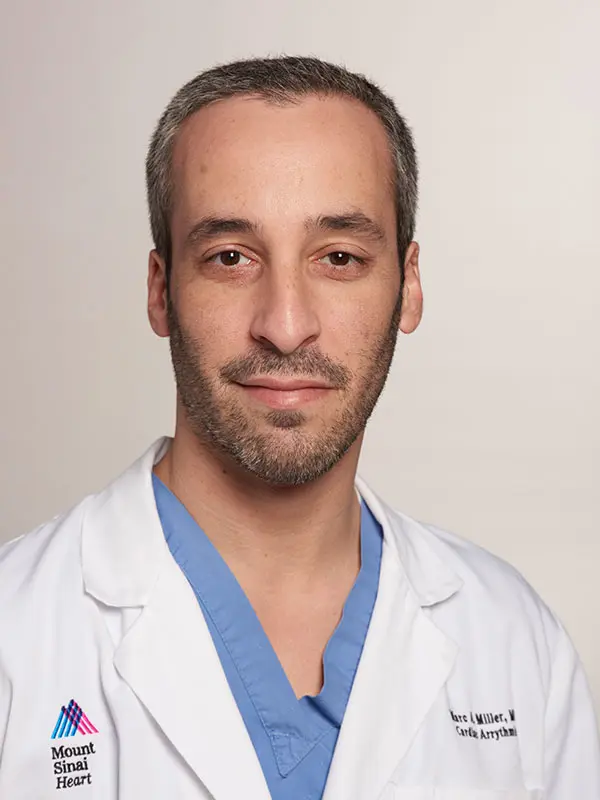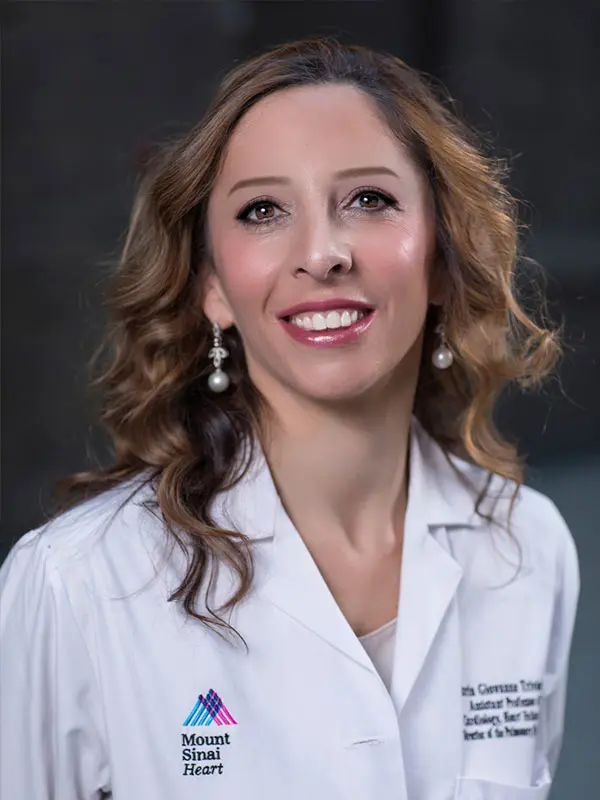Mitral valve prolapse (MVP), the most prevalent valvular heart disease affecting up to 3 percent of the Western population, follows a protracted, insidious course with subclinical progression of mitral regurgitation. While patients remain asymptomatic for years until they develop indications for surgical intervention, early population studies identified a small risk of complex ventricular arrhythmias and/or potentially fatal episodes of unexpected sudden cardiac arrest during the natural history of the disease. Recent reports, however, suggest that sudden cardiac death is more common in MVP patients than previously thought, affecting mostly young adult females with bileaflet prolapse. It is estimated that 25,000 people nationally are at risk for MVP-related sudden death every year.
Public attention was drawn to MVP in 2020, when Eleanor Carol Leavell Barr, the wife of Kentucky Congressman Andy Barr, suffered sudden death. The autopsy of the 39-year-old revealed the cause of her unexpected death: mitral valve prolapse. While her condition had been previously diagnosed, the risks associated with it had been underappreciated.
“Long considered benign in many cases, mitral valve prolapse is now recognized as a more significant risk factor in sudden cardiac death,” says Marc Miller, MD, a Cardiac Electrophysiologist and Associate Professor of Medicine at the Icahn School of Medicine at Mount Sinai.
Last year, a 35-year-old mother of six with mitral valve prolapse and frequent palpitations contacted Mount Sinai’s cardiac team for a second opinion. While she had been examined by cardiologists at another New York hospital, she felt uncertain about their recommended treatment—to implant a cardioverter-defibrillator. Since the approach did not address MVP, her primary underlying problem, and focused on just one consequence of it, palpitations, she wanted to explore alternatives.
At Mount Sinai, Dr. Miller and Jonathan L. Halperin, MD, the Robert and Harriet Heilbrunn Professor of Medicine at Icahn Mount Sinai and Director of Clinical Cardiology Services, suggested a more definitive approach, performing a catheter ablation to identify and target the origin(s) of her ectopic beats. Unfortunately, following two attempts, the PVCs returned shortly after the procedures.
“Long considered benign in many cases, mitral valve prolapse is now recognized as a more significant risk factor in sudden cardiac death.”
Marc Miller, MD
Advanced myocardial strain-derived imaging identified significant segmental dysfunction and global LV dyssynchrony in this normal-appearing LV on standard routine echocardiography. With this new information, the team consulted with David H. Adams, MD, the Marie-Josée and Henry R. Kravis Professor and Chair of the Department of Cardiovascular Surgery at the Icahn School of Medicine at Mount Sinai and the Cardiac Surgeon-in-Chief of the Mount Sinai Health System.
Based on the patient’s frequent, complex ventricular ectopy and progressively worse mitral regurgitation, Dr. Adams used a groundbreaking surgical approach by performing concomitant intraoperative papillary muscle cryoablation under direct vision during the planned mitral valve repair surgery, addressing both the valve dysfunction and the source of the triggering PVCs at the same time. Now fully recovered, the patient has no residual or recurrent ventricular ectopy.
The case is one of more than 20 of its type that Mount Sinai has successfully resolved using this novel hybrid approach, which no other hospital has reported in the medical literature.
The low event incidence of sudden death in otherwise asymptomatic patients limits the potential for reliable prognostic markers until recent reports described microstructural myofiber alterations in the form of scar/fibrosis in patients with SCA. Empowered by this breakthrough and their own experience with surgical valve reconstruction of MVP patients for the past 25 years, the Mount Sinai team initiated a pilot program dedicated to the comprehensive screening of all patients with degenerative MVP prior to mitral repair, with electrophysiologic (EP) assessment and a hybrid positron emission tomography / magnetic resonance imaging (PET/MRI) aimed to characterize the burden and distribution of fluorine 18–labeled (18F) fluorodeoxyglucose (FDG) uptake, a surrogate for myocardial inflammation and/or ischemia, and late gadolinium enhancement (LGE; a marker for scar/fibrosis) in patients with degenerative MVP and ventricular ectopy.
“Our findings with hybrid PET/MRI have identified inflammation as a possible precursor to endocardial scar and may identify a novel trigger to consider more aggressive mitral intervention” says Maria Giovanna Trivieri, MD, PhD, Medical Director of the Pulmonary Hypertension Program and Assistant Professor of Medicine (Cardiology) and Diagnostic, Molecular, and Interventional Radiology, at Icahn Mount Sinai.
A team at Mount Sinai Heart performed mitral valve repair surgery and concomitant direct-access bilateral papillary muscle cryoablation.
This initiative at Mount Sinai has since expanded to a national dedicated center for the diagnosis and management of arrhythmic mitral prolapse, with the shared leadership between cardiovascular surgery, EP, and advanced imaging, allowing a disruptive approach to a complex, multidimensional clinical syndrome, including a novel surgical strategy for definitive arrhythmic therapy using direct-access cryoablation of intraventricular arrhythmogenic foci at the time of mitral repair surgery, resulting in dramatic reduction of ectopic activity in most cases.
“One reason Mount Sinai is so effective in treating tough cases is our collaborative approach,” Dr. Halperin said. “Integrating the expertise of different specialists is often the key to success.”
How to Identify High-Risk Patients
Identifying candidates at significant risk can be challenging. Risk factors for SCD include female gender, bileaflet mitral prolapse, frequent and/or complex premature ventricular contractions, repolarization abnormalities and biphasic or inverted T waves in the inferior leads on electrocardiogram, and subendocardial LV fibrosis on MRI. As some of these characteristics, however, may not be DMP-specific, additional advanced screening may be necessary such as speckle-tracking-derived myocardial strain and hybrid cardiac PET/MRI imaging to improve risk stratification.
Recognizing the value that its pioneering therapy may hold for patients being treated for arrhythmic mitral valve prolapse at other cardiac centers, the Mount Sinai team has been sharing its approach in a recent National Heart Lung and Blood Institute workshop and has published findings in the highest impact peer-reviewed specialty journals. “We are at the precipice of defining the key that unlocks the mystery of sudden death in asymptomatic patients with degenerative mitral valve prolapse” says Dr. Adams.
Meanwhile, the U.S. House of Representatives recently passed the Cardiovascular Advances in Research and Opportunities Legacy (CAROL) Act, named for the congressman’s late wife, who went by her middle name. Anticipated to pass the Senate in 2022, the legislation will authorize critical investments in federal research studying valvular heart disease and will direct the Centers for Disease Control and Prevention to increase public awareness about effective strategies for preventing SCD.
Featured

David H. Adams, MD
Marie-Josée and Henry R. Kravis Chair of Cardiovascular Surgery, Icahn School of Medicine, and Cardiac Surgeon-in-Chief, Mount Sinai Health System

Marc Miller, MD
Associate Professor of Medicine (Cardiology), Icahn School of Medicine at Mount Sinai

Maria Giovanna Trivieri, MD, PhD
Associate Professor of Medicine (Cardiology, and Radiology

Zahi Fayad, PhD
Lucy G. Moses Professor in Medical Imaging and Bioengineering, and Professor of Medicine (Cardiology)